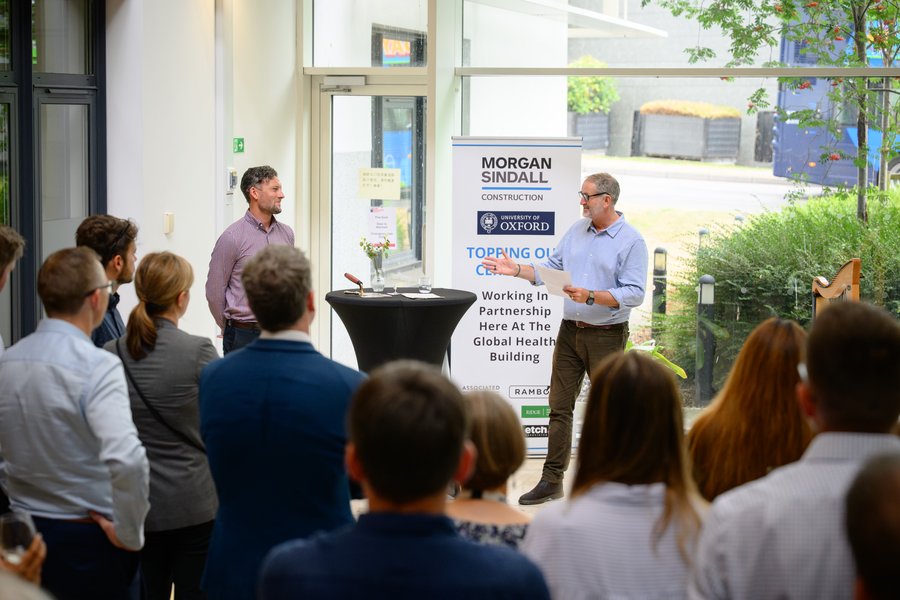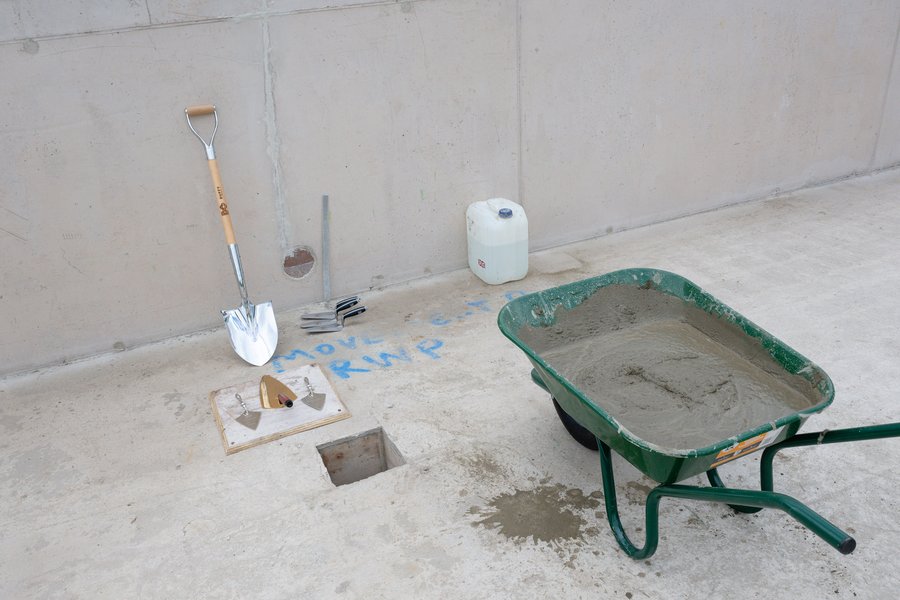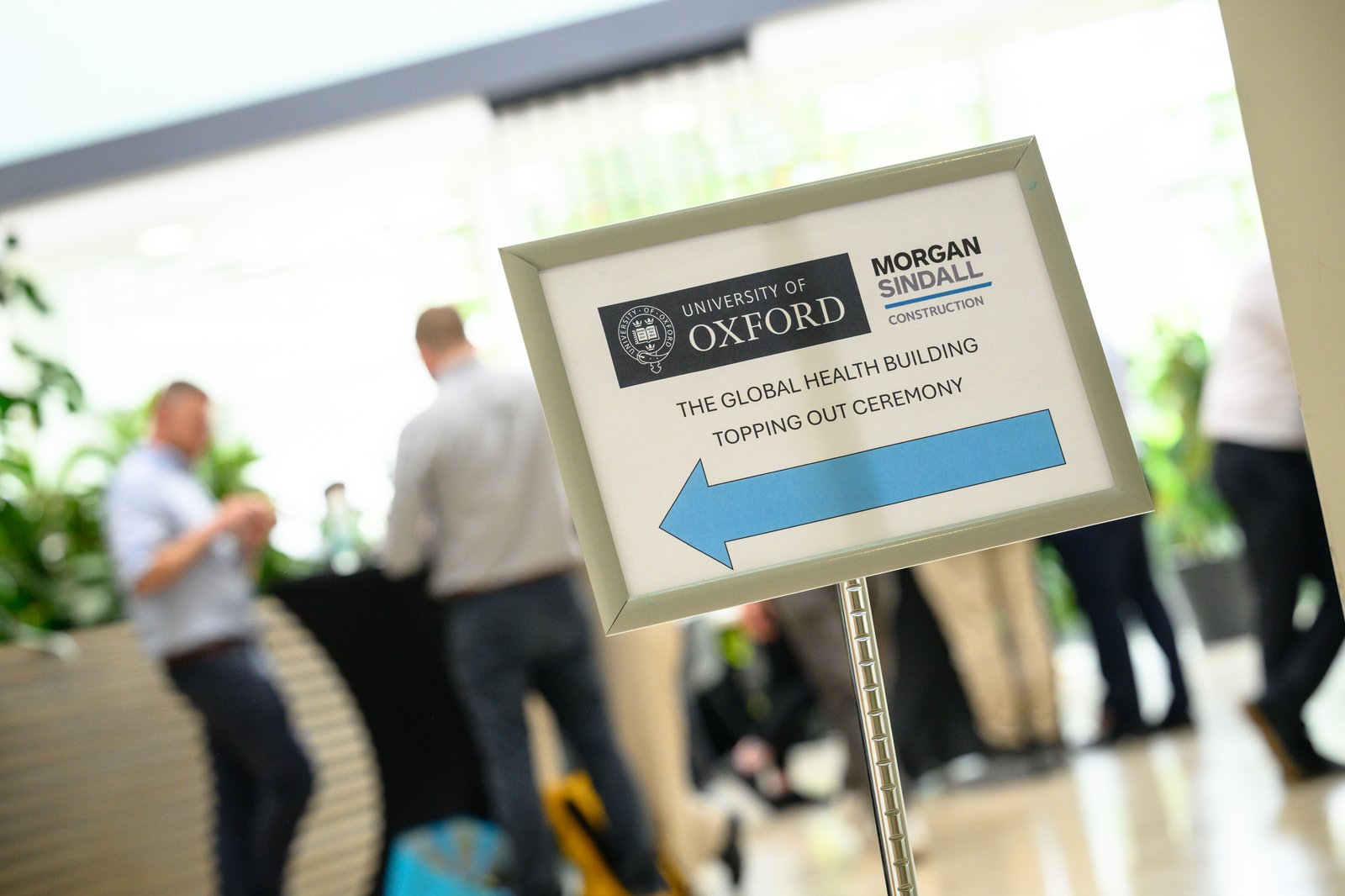Morgan Sindall Construction and the University of Oxford marked a significant milestone in the delivery of the £35 million Global Health Building with a ceremonial topping out event.
The event, held on Thursday 17 July was attended by Professor Susanna Dunachie, Director of the NDM Centre for Global Health Research; Richard Haynes, Professor of Renal Medicine and Clinical Trials; Trevor Payne, Director of Estates, and Steve Vaux, Operations Director at Morgan Sindall.
The rooftop ceremony was marked by Trevor Payne and Professors Dunachie and Haynes laying concrete with engraved trowels, marking the successful completion of the structural phase of this transformational Passivhaus project.


The celebration comes as construction progresses on the state-of-the-art 4,700 sq. m facility with three floors and a basement, which will accommodate around 250 staff. The building will act as a focal point for global health activities across the University, representing an exciting new phase of development for the world-class medical research that takes place on site.
The ambitious project will bring together teams from the Nuffield Department of Medicine, including the Centre for Global Health Research, with teams from Oxford Population Health as part of a strategic investment in medical research, aimed at further strengthening the University’s collective expertise in global health. With the structural envelope now complete, the project will turn its attention to the internal fit-out and advanced building services installation, with the facility on track for completion in June 2026.
The Global Health Building is being constructed to meet rigorous Passivhaus standards, ensuring exceptional environmental performance and energy efficiency. Morgan Sindall is deploying a range of intelligent solutions to achieve this demanding specification, from sourcing sustainable materials to implementing the latest low-carbon technologies and construction techniques.
Key features of the facility include modern office and research spaces designed to foster collaboration; advanced ventilation and insulation systems meeting Passivhaus standards; sustainable building materials and low-carbon construction methods; flexible workspace designed to accommodate interdisciplinary research teams and state-of-the-art facilities supporting cutting-edge medical research.
Through the clustering of Oxford's global health activities, the building will provide a modern, flexible space that will help to foster collaboration, providing a focal point for engagement across disciplinary boundaries.
Professor Susanna Dunachie, Director of the NDM Centre for Global Health Research, said:
Global Health research addresses health problems worldwide, with a focus on partnership and equity.
This flagship building will be a world centre for excellence in Global Health research, bringing together international researchers to train, learn and share knowledge. The Nuffield Department of Medicine and Oxford Population Health will collaborate with multi-disciplinary researchers across the globe and within Oxford to support discovery and the delivery of life-changing solutions.”
Professor Sir Rory Collins, Head of Oxford Population Health, said:
Despite improvements in healthcare in recent decades, health problems still result in avoidable suffering and premature death for millions of people globally.
The new Global Health Building will provide a dedicated space for collaboration on some of the most important questions about the causes, prevention, and treatment of diseases affecting people across the world. It will also enable us to train the next generation of population health scientists in dedicated teaching space.”
James York, Area Director for Morgan Sindall Construction, said:
Reaching this structural milestone is a key moment in delivering a facility that will greatly enhance Oxford’s global health research capabilities.
This building will create a sustainable, modern space fostering the collaboration and innovation essential to medical breakthroughs. We are proud to support the University of Oxford in providing a building that meets the highest environmental standards while offering the flexible spaces needed for future research."
Trevor Payne, Director of Estates at the University of Oxford, said:
It's a pleasure to see the progress that's been made on this superb new building – one of the last steps in realising the University's long-term vision of transforming the Old Road Campus into a world-leading centre for biomedical science. It's also a vital milestone on our journey towards reaching net zero by 2035, designed and built to consume very little energy while providing comfortable, attractive, flexible spaces for teaching, research and collaboration. We look forward to seeing the completed building make a lasting contribution to work that saves lives and improves health all over the world.”
ENDS


